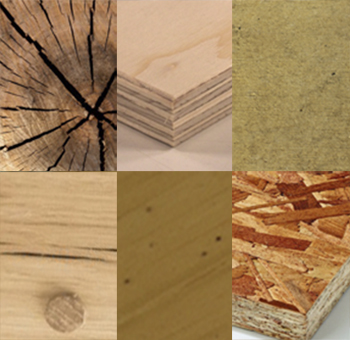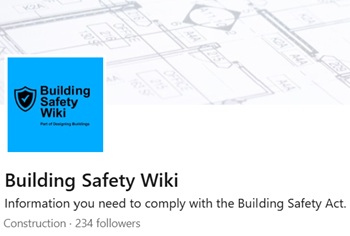How to hang wallpaper
Contents |
[edit] How to Prepare Your Walls for Wallpaper
[edit] Step 1: Remove Wall Plates & All Decor And Move Furniture Out Of The Way.
Before installing your new wallpaper, you'll need to take a few preparatory steps.
- First, remove all decor and wall plates from the area where you'll be working.
- Then, move any furniture out of the way so you'll have plenty of space to manoeuvre.
- Once you've prepared the area, you're ready to begin installing your new wallpaper.
[edit] Step 2: Repair Any Damage.
- Before you can instal new wallpaper, you need to repair any damage to the existing walls. Cracks, holes, and other imperfections will show through the new wallpaper, so it's important to take care of them before you begin.
- With a little patching compound and some elbow grease, you can make your walls look new again.
[edit] Step 3: Smooth The Walls With Sandpaper.
- Smooth the walls with sandpaper to create a smooth surface for the wallpaper to adhere to. In addition, sanding will remove any paint or other roughness from the wall's surface.
- When sanding, wear a dust mask and goggles to protect your eyes and lungs from the dust. Begin with coarse-grit sandpaper and then move on to finer-grit sandpaper until the walls are completely smooth.
- Once you have finished sanding, vacuum the walls to remove dust.
[edit] Step 4: Wash The Walls And Allow Them To Dry.
- Wash the walls and let them dry. This will remove any dirt or residue that may prevent the wallpaper from adhering properly.
[edit] Step 5: Prime The Walls.
- The final step in preparing your walls is to prime them. This will help to create a smooth surface for the wallpaper to adhere to and also help to prevent any air bubbles from forming.
[edit] How to Hang Wallpaper
[edit] Step 1: Measure All Your Walls & Draw A Central Plumb Line.
- Use a tape measure to determine the dimensions of your wall.
- Use a pencil to mark the halfway point on each wall.
- Use a level to draw a straight line along the length of each wall, making sure to intersect the marks at the halfway point.
[edit] Step 2: Figure How Many Strips Of Wallpaper You'll Need.
Before you begin, calculate how many strips of wallpaper you'll need to paper your wall. To do this, measure the height and width of the wall and multiply these numbers together. Then, add 10% to allow for pattern matching and trimming.
If you have windows or doors in the room, deduct their measurements from the total wall area, so you don't purchase too much wallpaper. Also, take into account any pattern repeats in your wallpaper design.
[edit] Step 3: Measure The First Strip Of Wallpaper.
Hang the first strip of wallpaper using a plumb line and level as a guide. To determine the amount of wallpaper you need, measure the wall height from the floor to the ceiling and add two inches for trimming.
Hang the first strip of wallpaper along the ceiling line, aligning one end at the corner and allowing the extra paper to extend past the other.
Use a utility knife to score (not cut) through both layers of paper where they meet at doorways or windows; this will make it easier to remove or reposition the strips later if necessary.
[edit] Step 4: Cut All Of The Whole Wallpaper Strips.
Hang your first strip of wallpaper at the top corner of the room. But before you start, cut off the excess paper at the top and bottom of the strip so it will fit perfectly.
Then, use a level to ensure it's straight before applying adhesive to the back. Once it's in place, smooth out any bubbles with a wallpaper brush. To avoid air bubbles under your paper, start in the middle of each strip and work toward the edges using a smoothing tool. Finally, trim any excess paper along baseboards or moldings with a sharp blade or scissors before hanging subsequent strips.
Continue to hang all of your strips, making sure to overlap the seams by about an inch. When you get to the last strip, cut it to size, and then use a sharp utility knife to trim any excess around the room's edges.
[edit] Related articles on Designing Buildings
Featured articles and news
Microcosm of biodiversity in balconies and containers
How minor design adaptations for considerable biodiversity benefit.
CIOB student competitive construction challenge Ireland
Inspiring a new wave of Irish construction professionals.
Challenges of the net zero transition in Scotland
Skills shortage and ageing workforce hampering Scottish transition to net zero.
Private rental sector, living standards and fuel poverty
Report from the NRH in partnership with Impact on Urban Health.
.Cold chain condensing units market update
Tracking the evolution of commercial refrigeration unit markets.
Attending a conservation training course, personal account
The benefits of further learning for professsionals.
Restoring Alexander Pope's grotto
The only surviving part of his villa in Twickenham.
International Women's Day 8 March, 2025
Accelerating Action for For ALL Women and Girls: Rights. Equality. Empowerment.
Lack of construction careers advice threatens housing targets
CIOB warning on Government plans to accelerate housebuilding and development.
Shelter from the storm in Ukraine
Ukraine’s architects paving the path to recovery.
BSRIA market intelligence division key appointment
Lisa Wiltshire to lead rapidly growing Market Intelligence division.
A blueprint for construction’s sustainability efforts
Practical steps to achieve the United Nations Sustainable Development Goals.
Timber in Construction Roadmap
Ambitious plans from the Government to increase the use of timber in construction.
ECA digital series unveils road to net-zero.
Retrofit and Decarbonisation framework N9 launched
Aligned with LHCPG social value strategy and the Gold Standard.
Competence framework for sustainability
In the built environment launched by CIC and the Edge.
Institute of Roofing members welcomed into CIOB
IoR members transition to CIOB membership based on individual expertise and qualifications.
Join the Building Safety Linkedin group to stay up-to-date and join the debate.
Government responds to the final Grenfell Inquiry report
A with a brief summary with reactions to their response.



























Comments
[edit] To make a comment about this article, click 'Add a comment' above. Separate your comments from any existing comments by inserting a horizontal line.